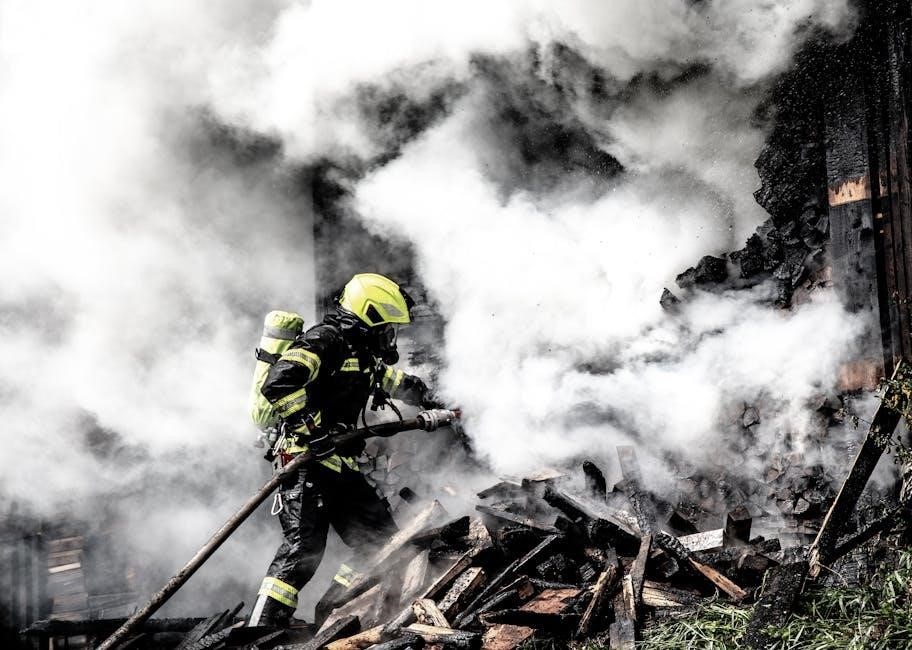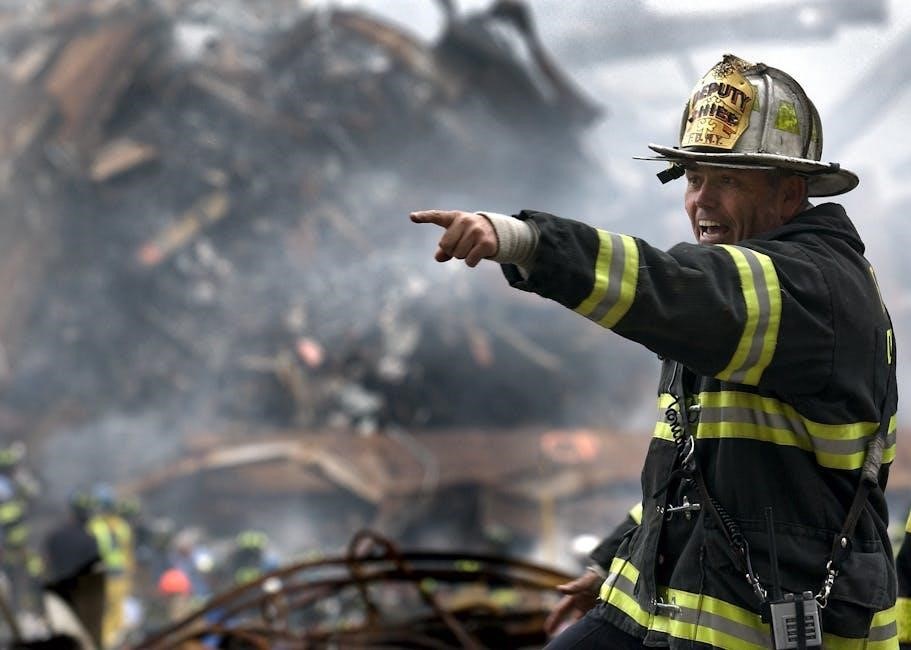
fire protection guide to hazardous materials
The Fire Protection Guide to Hazardous Materials provides information on chemicals and response to fires and emergencies with NFPA documents and classifications available online always.
Overview of the Guide
The Fire Protection Guide to Hazardous Materials is a comprehensive resource that provides information on the safe handling and storage of hazardous materials. The guide is published by the National Fire Protection Association and is available in various editions, including the 2010 edition. The guide includes information on NFPA 30/OSHA classifications for flammable and combustible liquids, as well as chemical matrixes and other resources. The guide is designed to help individuals work safely with chemicals and respond effectively to fires, accidental releases, and other emergencies. The guide is an essential resource for anyone who works with hazardous materials, including firefighters, emergency responders, and industrial workers. The guide is available online and can be purchased through various retailers, including Amazon. The guide is a valuable tool for promoting safety and preventing accidents.

Classification of Hazardous Materials
NFPA and OSHA classifications are used to categorize hazardous materials for safe handling always online.
NFPA 30/OSHA Classifications
NFPA 30 and OSHA classifications are crucial in the fire protection guide to hazardous materials, providing a framework for categorizing chemicals. The National Fire Protection Association and Occupational Safety and Health Administration have established guidelines for classifying hazardous materials, including flammable and combustible liquids. These classifications are essential for ensuring safe handling, storage, and transportation of hazardous materials. The NFPA 30/OSHA classifications provide a standardized system for identifying the hazards associated with various chemicals, enabling employers and employees to take necessary precautions to prevent accidents and injuries. By understanding these classifications, individuals can better navigate the complexities of hazardous materials management. Effective classification is critical in preventing fires and explosions.
Hazardous Properties of Chemicals
Chemicals have hazardous properties including flammability and reactivity causing fires always.
Chemical Matrixes
The Fire Protection Guide to Hazardous Materials includes chemical matrixes that provide information on the properties of chemicals. These matrixes are used to identify the hazardous properties of chemicals and to determine the best course of action in case of an emergency. The chemical matrixes are a valuable tool for firefighters and emergency responders who need to quickly and accurately identify the hazards associated with a particular chemical. The matrixes are also useful for industries that handle and store hazardous materials, as they provide a way to quickly and easily identify the hazards associated with a particular chemical. This information is essential for ensuring safe handling and storage of hazardous materials.

Fire Protection Measures
Fire protection measures include safety protocols and equipment to prevent fires and minimize damage always with proper training and equipment available online.
Response to Fires and Emergencies
Response to fires and emergencies involves quick action and proper training to minimize damage and prevent injuries. The Fire Protection Guide to Hazardous Materials provides information on how to respond to fires and emergencies involving hazardous materials. This includes evacuation procedures, fire extinguishing methods, and first aid techniques. The guide also covers the use of personal protective equipment and emergency response planning. By following the guidelines outlined in the Fire Protection Guide to Hazardous Materials, individuals can respond effectively to fires and emergencies and prevent serious consequences. The guide is an essential resource for anyone working with hazardous materials. It provides critical information on emergency response and fire protection measures.

Regulatory Requirements
Compliance with NFPA and OSHA regulations is necessary for fire protection and hazardous materials handling always online with specific guidelines and rules available.
Compliance with NFPA and OSHA Regulations
Compliance with NFPA and OSHA regulations is crucial for ensuring fire safety and proper handling of hazardous materials. The National Fire Protection Association and Occupational Safety and Health Administration provide guidelines and rules for compliance. These regulations outline the requirements for fire protection equipment, training, and emergency response planning. Employers must comply with these regulations to prevent fires and ensure a safe working environment. Regular inspections and training are necessary to maintain compliance and prevent accidents. By following NFPA and OSHA regulations, businesses can reduce the risk of fires and ensure a safe and healthy work environment for employees, which is essential for any organization.

Safe Handling and Storage
Proper handling and storage procedures are essential for preventing accidents and fires always online with guidelines and regulations available for reference purposes only.
Guidelines for Safe Handling and Storage
The guidelines for safe handling and storage of hazardous materials are crucial for preventing accidents and fires.
These guidelines provide information on the proper procedures for handling and storing chemicals, including labeling, packaging, and transportation.
The National Fire Protection Association provides guidelines and regulations for the safe handling and storage of hazardous materials.
The guidelines also include information on the use of personal protective equipment and emergency response procedures.
Proper training and education are essential for ensuring that employees understand the guidelines and procedures for safe handling and storage.
The guidelines are available online and can be referenced by employers and employees to ensure compliance with regulations and to prevent accidents and fires.
Following these guidelines can help prevent injuries and fatalities.
Proper storage and handling can also prevent environmental damage and contamination.
The guidelines are regularly updated to reflect changes in regulations and new information on hazardous materials.
Emergency Response Planning
Developing plans for emergency response to fires and hazardous materials incidents is crucial for saving lives and property always online.
Developing an Emergency Response Plan
Developing an emergency response plan is a critical step in ensuring a safe and effective response to fires and hazardous materials incidents. The plan should include procedures for evacuation, firefighting, and medical response. It should also identify the roles and responsibilities of emergency responders and other personnel. The plan should be regularly reviewed and updated to ensure it remains effective. Additionally, training and drills should be conducted to ensure that all personnel are familiar with the plan and their roles. This will help to minimize the risks associated with fires and hazardous materials incidents and ensure a safe and effective response. The plan should be available online for easy access.
Training and Education
Training and education are essential for personnel handling hazardous materials and responding to fires and emergencies always online.
Importance of Training and Education
The importance of training and education in fire protection guide to hazardous materials cannot be overstated, as it ensures personnel are equipped to handle emergencies and respond effectively to fires and accidental releases, with online resources and NFPA documents providing valuable information and guidance on safe handling and storage procedures, and emergency response planning, which is critical for preventing accidents and minimizing risks, and with proper training and education, personnel can work safely with chemicals and respond effectively to emergencies, and make informed decisions about fire protection and emergency response, and stay up-to-date with the latest regulations and guidelines, always online.